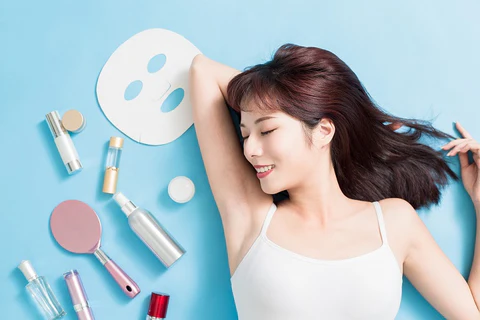A Journey Through Japanese vs Korean Skin Care Routine Traditions
While in skin care, Japan and Korea have long been at the forefront with distinctive practices based on tradition, technology, and beauty ideals. While both regimes share the pursuit of a flawless complexion, healthy radiant skin is aimed for in another practice, product, and mindset. Let us walk through the fascinating aspects of Japanese and Korean skin care routine and see what makes them distinct.

The Philosophy of Japanese and Korean Skincare
Japanese Skincare Philosophy: Simplicity Purity
Japanese skincare: simplicity, purity, and prevention. Drawing from centuries of beauty practices, the routine is one that subjects the skin to minimalist philosophy, utilizing mild, natural products that protect and fortify the barrier function of the skin. The routine is about simplicity and effectiveness in which more is valued in quality than quantity.
Korean Skincare Philosophy: Layering Innovation
Korean skincare, however, is based on the philosophy of layering carefully and constant innovation. The goal is to attain "glass skin" that is clear, smooth, and well-hydrated. The Korean skin care routine process has several steps, each step intended to solve one particular skin issue without sacrificing moisture and nutrition.
Japanese and Korean Skin Care Routines Compared
1. Cleansing: A Gentle Start
Japanese Regimen: Double cleansing comes first, usually beginning with oil cleanser to emulsify the sunscreen and makeup and followed by low-pH foaming cleanser to sweep off the dirt.
Korean Regimen: Also follows double cleansing but prefers to use micellar water or cleansing balms followed by low-pH foam or gel cleanser not to disturb the balance of the moisture of the skin.
2. Exfoliation: Smooth Skin Texture
Japanese Routine: Minimal exfoliation with light rice enzyme powders or mild peeling gels that eliminate dead skin without disrupting the skin barrier.
Korean Routine: Increased frequency of chemical exfoliants like AHA, BHA, and PHA, and peeling pads to achieve maximum cell turnover and increase skin radiance.
3. Hydration Toning: Prepping the Skin
Japanese Daily Regimen: Toners are referred to as "lotions" and are not heavy, with a focus on replenishing moisture rather than exfoliating. They are filled with moisturizing agents like hyaluronic acid and fermented extracts.
Korean Routine: Toners are multi-tasking which have exfoliating and deep moisturizing. Perhaps the most widespread method of accomplishing the 7-skin effect, i.e., layers of toner applied to the skin in hopes of leaving the skin dewy and plump.
4. Treatment Targeted Care
Japanese Routine: Essences and serums are applied with restraint, using classic botanicals such as green tea, rice, and seaweed for moisturizing and anti-aging.
Korean Routine: Includes a wide variety of essences, ampoules, and serums, sometimes adding ingredients such as centella asiatica, snail mucin, and niacinamide to address specific skin issues.
5. Moisturization: Locking in Hydration
Japanese Routine: Moisturizers are lightweight but intensely moisturizing, frequently featuring ingredients such as camellia oil and squalane to lock in moisture.
Korean Routine: Layering with emulsions, creams, and sleeping masks for long-term hydration.
6. Sun Protection: The Final Step
Japanese Routine: Sunscreen is an important step, with non-greasy, lightweight formulas packed with skincare goodness.
Korean Routine: Similarly sun-protective, often in the form of sunscreens with skincare properties and a dewy texture.
Key Differences Which One to Choose?
Approach: Japanese skincare is quality- and minimalist-focused and ageless in ingredients, while Korean skincare is active and trend-centric and innovation-formulation-based.
Texture Feel: Japanese skin care routine is lightweight, natural-textured, while Korean products leave a plumper, dewy look.
Steps: Japanese routines are short, typically 4-6 steps, while Korean routines contain up to 10 steps, giving it some extra space for customization.
If you are one who likes a minimalist but effective routine and experimented ingredients, then Japanese skincare is for you. If you like trying new products, layering the moisture, and pampering yourself, then Korean skincare will be just right.
Final Thoughts
Both the Korean vs Japanese skin care products in India are just wonderful, so the answer is none. Utilize either the simplicity of Japanese skincare or the innovation of Korean skincare, success is what works best for your skin type and lifestyle. Taking pieces from both routines and piecing them together can even result in a customized routine tailored to your unique skincare needs!
Wherever you are going, the journey to glowing, healthy skin is always a beautiful one.




